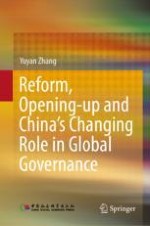2021 | OriginalPaper | Chapter
6. The Relationship Between China and India Within the Framework of Asian Economic Integration
Author : Yuyan Zhang
Published in: Reform, Opening-up and China's Changing Role in Global Governance
Publisher: Springer Singapore
Activate our intelligent search to find suitable subject content or patents.
Select sections of text to find matching patents with Artificial Intelligence. powered by
Select sections of text to find additional relevant content using AI-assisted search. powered by
